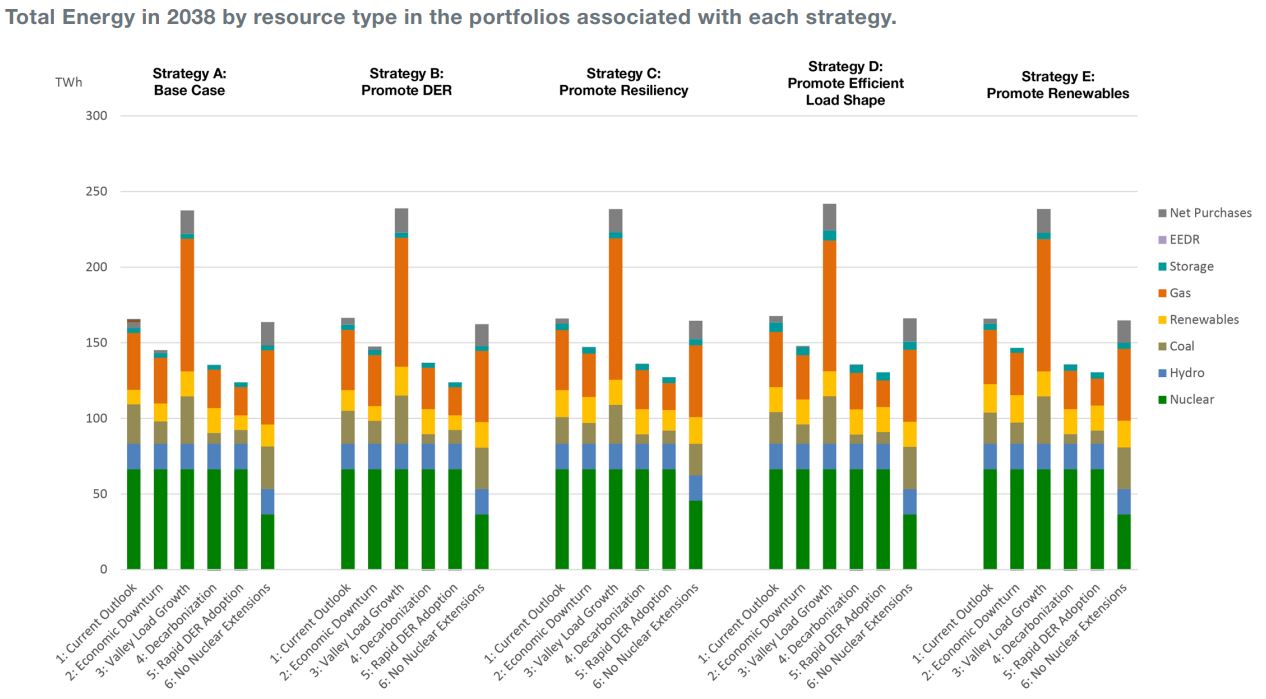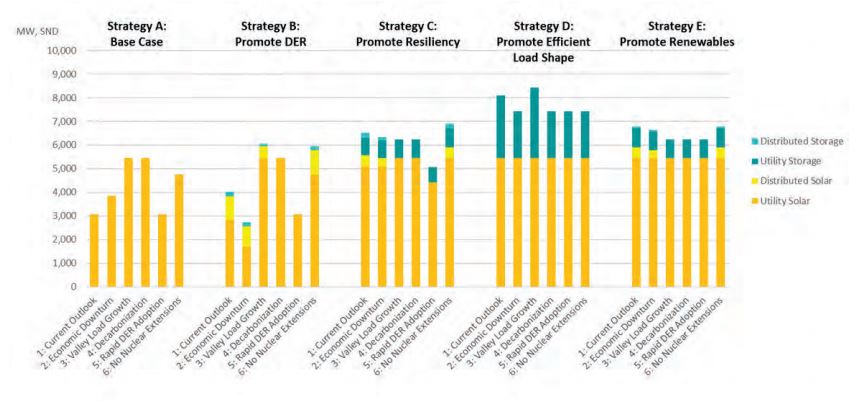Business continuity is important if you’re going to keep the best talent in house. Business continuity is important if the banks are going to keep lines of credit open for local contractors. Local contractors need to learn to diversify across market lines to avoid well known state-level solar industry gyrations. Turn, turn, turn.
The Tennessee Valley Authority (TVA) has announced that the Generation Partners/Green Power Providers (GP/GPP) program will stop accepting applications on January 1, 2020. The utility states that the program no longer meets market needs.
Concurrent with this cancellation is the semi-public power authority’s announcement that it will be retiring two (2.1 GW total) of its eight coal facilities, as it moves to the further public comment phases of its required quadennial 2019 Integrated Resource Plan (IRP) that lays out TVA’s long-term vision.
The Draft Resource Plan describes the modeling done by TVA that led it to its current resource guidance plans. Drivers of the company’s current position, noted in the Executive Summary, are a focus on flexibility (coal plant retirements were noted as partially due to lack of flexibility of these resources), the need for future growth, a desire for resiliency, and compelling prices for solar power in the middle 2020s (though little suggested volume).

The Current Outlook case in the Best Case scenario sees approximately approximately 3 GW of new solar, and about 4.5 GW of new gas to be built, with minimal retirements through 2038. This can be seen in the far left of the above image, and this model suggests that the utility will mostly continue to run its heavy nuclear- and hydro-based system, mostly unchanged other than the trades from coal to gas happening right now, for the next generation (below image).

When focusing on solar and storage, the IRP notes that under certain strategies – Promoting Resiliency, Efficient Load Shape or Renewables would lead to a bit more solar power – up to 5 GW versus 3 GW currently proposed – and energy storage volume ranging from 500 MW to 2-5-3.5 GW.

The utility suggests that Best Case scenarios won’t need any additional energy storage.
This content is protected by copyright and may not be reused. If you want to cooperate with us and would like to reuse some of our content, please contact: editors@pv-magazine.com.








Thanks John Weaver. Is it correct the GPP had a limit of 10 MW new solar per year for the entire TVA system? That’s what I gathered from it. I believe you meant trades from coal to NG (CCGTs), as this is the slow current trend. UtilityDive’s latest podcast was on TVA’s coal ash issues. After they squashed the Clean Energy Line connection to the TVA transmission system, let’s hope the recent announcement of the Google/Nextera/Invenergy Datacenter/PV farms project leveraged [also] both Nextera & Invenergy’s acquisition of the Clean Energy Line project to force the connection issue. Let’s also hope, TVA’s customers [the CoOps/EMCs] start threatening to defect from this G&T’s effective monopoly and artificial limits/ceilings on RE additions.
PS… the state effectively banned new large RE projects, starting with the Crab Orchard wind farm (near Crossville) – killing that project. Not surprisingly, the neighboring [new] community, Fairfield Glades HOA does not allow PV on its thousands of homes, but they are building new sub-transmission & substations… while TVA continues its long running “wo is me” position of no new load growth to justify its captive market position of new need for new generation resources.
Once a very good program, GPP allowed us to develop 28 solarized schools in East Tennessee using 3rd party investors, guaranteeing the schools nearly $1,000,000 in new revenue with NO investment. But as TVA incrementally gutted GPP, that business model could no longer attract the needed investment. So, 1500 other school lose out.
Today’s GPP program, paying less than retail for 100% of generated solar, will never pay the owner off or break even. I question the ethics of even offering such a program.
Meanwhile, simply installing solar “Behind the Meter” (BTM) and then using the power internally, now compares competitively with investments of ANY kind, with steady returns over 40-50 years! And… there are no utility hassles or fees to make it difficult.
As a GPP participant, solar panels on my roof, can I use those panels to provide my own power once my contract has expired?
Yes, you may convert your solar panels for internal power use. You do no even have to wait until your GPP contract expires; you can cancel anytime on 60 days notice (TVA can’t).
To make the change, simply have your electrician move the interconnection from the utility side of the meter to your side, generally called “Behind the Meter”, where TVA has no authority. Thereafter, all power you generate is your to use internally, reducing your TVA power purchases. Now that TVA has cancelled its support for solar, it’s the only way to go!
Note: in Tennessee, a utility cannot legally discriminate against a customer who installs “energy efficiency” equipment on its own property. That, is, no solar fees, etc.
I am preparing to install a 10k system on my home in Sumner County. Tri County is saying they will charge me a $100.00 a month fee if I go SGDPP. Is this legal?
I don’t know the exact rules for this utility. however, most utilities seem to be able to do as they please because their state has given them permission to do so. Do you have a copy of the email/document where they show the charge? Maybe we should write about it.
You can send it to me at john.weaver@pv-magazine.com
In reply to your comment on Duane Clark or 11/5/19, I have verified that TVA has no authority to enforce any policy on any individual within a state. A utility may not discriminate against a customer that installs energy efficiency equipment on its own property.
TN Code Annotated 65-32-104 (c) It is unlawful for any such corporation to make or give an undue or unreasonable preference or advantage to any particular person or locality, or any particular description of traffic or service, or to subject any particular person, company, firm, corporation, or locality, or any particular description of traffic or service to any undue or unreasonable prejudice or disadvantage.